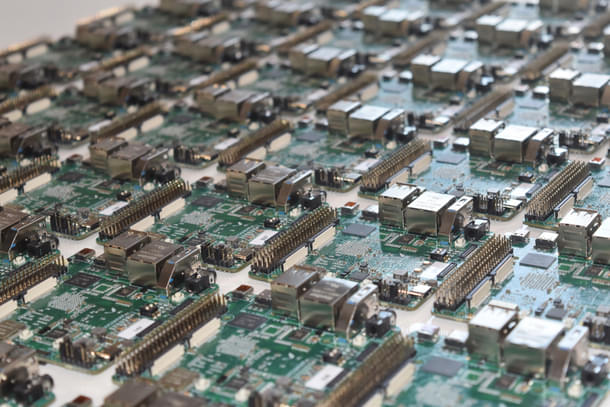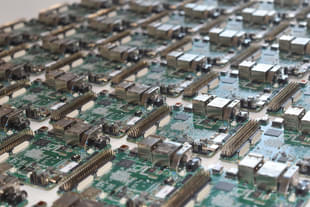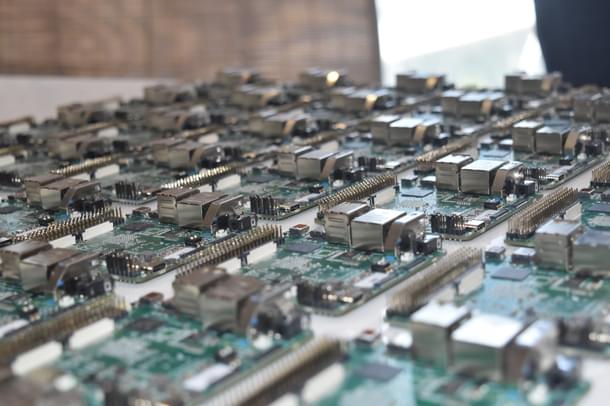Technology
Innovation At The ‘Edge’: Hardware Startup From Surat Pioneers The Reconfigurable Edge Computer — And Reshapes Computing As We Know It
Karan Kamble
May 25, 2024, 02:02 PM | Updated 02:02 PM IST
Save & read from anywhere!
Bookmark stories for easy access on any device or the Swarajya app.


Last month, Surat-based hardware startup Vicharak launched their very first product — an edge computing board called Vaaman.
From software developers to researchers who are looking to run custom algorithms and novel experiments, hardware designers to hobbyists dabbling in robotics, home automation, and DIY (do it yourself) electronics, industry professionals of various stripes are likely to gravitate towards Vicharak’s versatile, compact, high-performance single-board computer.
It is likely to find application in drones, robotics, defence, space, autonomous vehicles, machine vision, and the internet of things.
Vaaman deals with edge computing. The main idea with edge computing is to process data closer to the source of the data. In the alternative, prevailing scenario, the data is sent to a generally distant centralised cloud or data centre. This eats up time and comes at the cost of latency. Edge computing increases the efficiency of data processing and transmission, and thereby lowers latency.
The “edge” refers to the edge of the network, closer to the devices or sensors that produce the data. And the physical hardware device that is deployed near the data source or “edge” is called an edge computer.
Edge computers take various forms, like servers, appliances, single-board computers, and industrial personal computers. Vaaman is a compact, low-power single-board computer in the vein of Raspberry Pi and NVIDIA Jetson.
Vaaman combines a central processing unit (CPU) and a field programmable gate array (FPGA) for advanced capabilities. While the familiar “CPU” is the main general-purpose processor in an edge computing device, the “FPGA” is a programmable logic processor incorporated for hardware acceleration of specific workloads, such as video processing and data encryption or decryption.
FPGAs are increasingly sought-after in edge computing devices, thanks to their flexibility, among other things like parallelism and the ability to deliver high performance at low power levels. The specialty of FPGAs is that their functionality can be configured and tailored to varying needs even after the completion of their manufacturing.
Vicharak prides itself on its FPGA, which it describes as “a reconfigurable hardware that acts like software.” The startup’s mission is to “make FPGA technology accessible, bridging the gap between hardware and software.”
Vaaman features a six-core ARM CPU and an FPGA with 112,128 logic cells. The 300 MBps (megabytes per second) link between FPGA and CPU makes the edge computing board great for hardware acceleration and parallel computing.
Parallel computing refers to the simultaneous use of multiple compute resources like processors, cores, or computers for greater performance, scalability, and efficiency, combined with the all-important lower latency in the edge computing context.
Vaaman also incorporates a wide range of interfaces, including PCI, HDMI, USB, MIPI, audio, ethernet, WiFi, Bluetooth, BLE, LVDS, and GPIOs, lending it a high degree of versatility.
“Its unique design makes it ideal for addressing many challenges unmet by current products,” Vicharak says.

With its abilities like parallel processing and reconfigurability, Vaaman is said to excel at swiftly categorising and identifying objects in real time; detecting human presence and even run a head count, besides gesture detection; processing of visual data for applications like quality control, defect detection, and industrial automation; processing advanced cryptographic algorithms efficiently; and real-time video and image processing.
Vicharak started shipping Vaaman in March 2024. They have shipped their boards to six people for beta testing, who are using it in drones and image recognition, among other things, as told to Swarajya by the company’s founder and chief executive officer, Akshar Vastarpara.
Vastarpara and his team are committed to building computing technology that breaks free from the limitations of conventional computer architecture, where the CPU and memory are separate components connected by a data bus.
This “bottleneck” is called the Von Neumann bottleneck, named after the Hungarian-born American mathematician John von Neumann.
In 1945, Von Neumann proposed the computer architecture that later became integral to the make-up of most modern computers. In this architecture, there is a constant shuttling of data between the CPU and memory, which creates a “bottleneck” and limits the overall performance of the system.
“This bottleneck inspired a new vision at Vicharak—a vision of overcoming constraints by introducing flexibility not just at the software level but fundamentally reshaping hardware in real-time,” Vicharak says. Their solution was “reconfigurable computing.”
The essence of reconfigurable computing, according to the company, is “where hardware adapts to the specific needs of software on the fly, providing unprecedented speed and efficiency.”
Besides battling the Von Neumann bottleneck, the Surat startup has been trying to solve for the limitations of Moore’s Law.
In 1965, Intel co-founder Gordon Moore observed that the number of transistors on a microchip would double roughly every two years, while the cost of computers would halve. This prediction of an exponential growth in the number of components per integrated circuit has held forth for decades, but is now starting to hit a wall.
While transistor sizes have increasingly decreased over the years for more and more of them to be accommodated into integrated circuits, there are fundamental physical and technological limitations to sustain the reduction in sizes — transistor sizes have already reached atomic scales. Thus, Moore’s Law might struggle to hold up in the future.
As a result, the industry has been looking at alternative approaches like parallelism, specialised accelerators, and new computing architectures. Following suit, Vicharak has innovated an alternative to the existing computer architecture. They call it Adaptive Parallel Processing Compute Architecture (APPA).
The APPA architecture is designed for hardware that adapts and reconfigures itself as per the needs of the software. Applications include cryptography, artificial intelligence (AI), and networking. Thus, using the same physical infrastructure, Vicharak is seeking to maximise computation to achieve greater performance levels.
With its reconfigurable, next-generation computing solutions, the startup from Surat is in the process of reshaping computing as we know it.
Karan Kamble writes on science and technology. He occasionally wears the hat of a video anchor for Swarajya's online video programmes.





